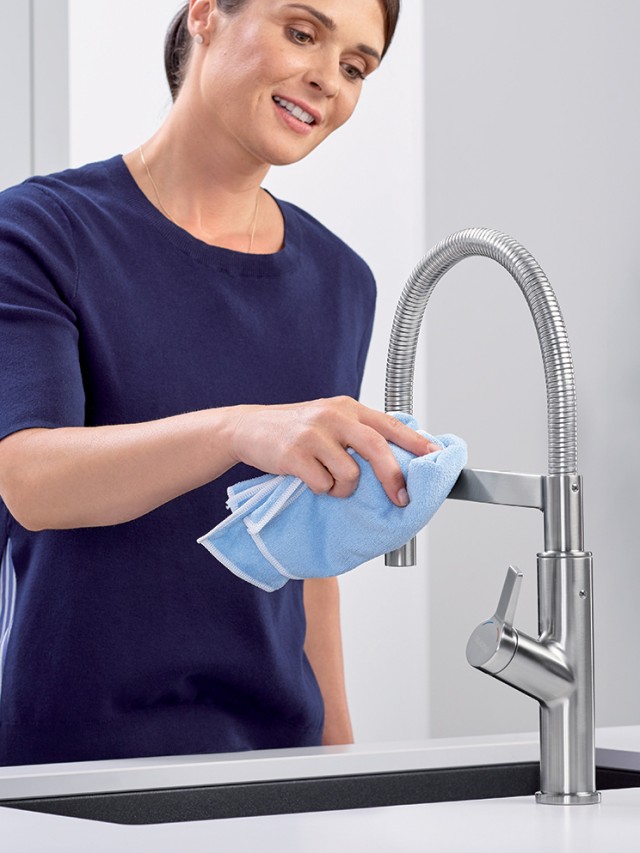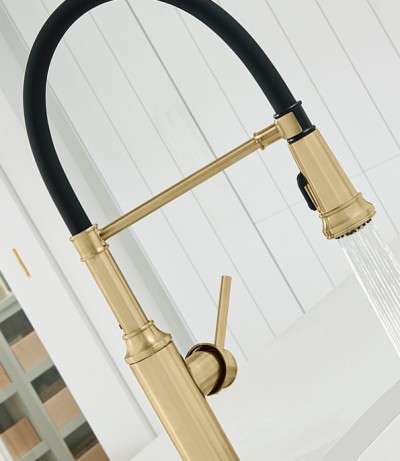How to clean your kitchen faucet?
Cleaning your faucet does not have to be a time-consuming task. When turning off your faucet with wet hands, you almost always leave drops of water on it. These dry and leave limescale behind. Visible limescale can form quickly, so you should dry the surface of your faucet with a microfiber cloth after each use. This will allow you to extend the intervals between regular cleanings.
Follow these simple tips to regularly clean and remove limescale from your faucet to easily keep it looking like new for years to come:
- Use a mild, organic acid, e.g., a solution of acetic or citric acid.
- Before applying the substance, check whether your surfaces are resistant to acids.
- Apply the cleaning agent to the soft side of a sponge and wipe the faucet down thoroughly.
- Be sure not to leave acid-based cleaner on for longer than indicated on the package instructions.
- Rinse the faucet with clean water and dry with a microfiber cloth.



